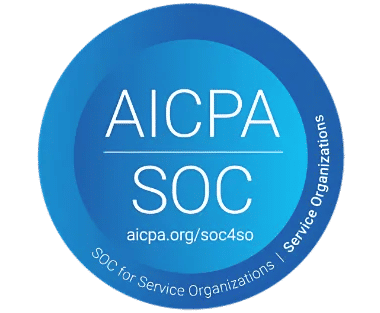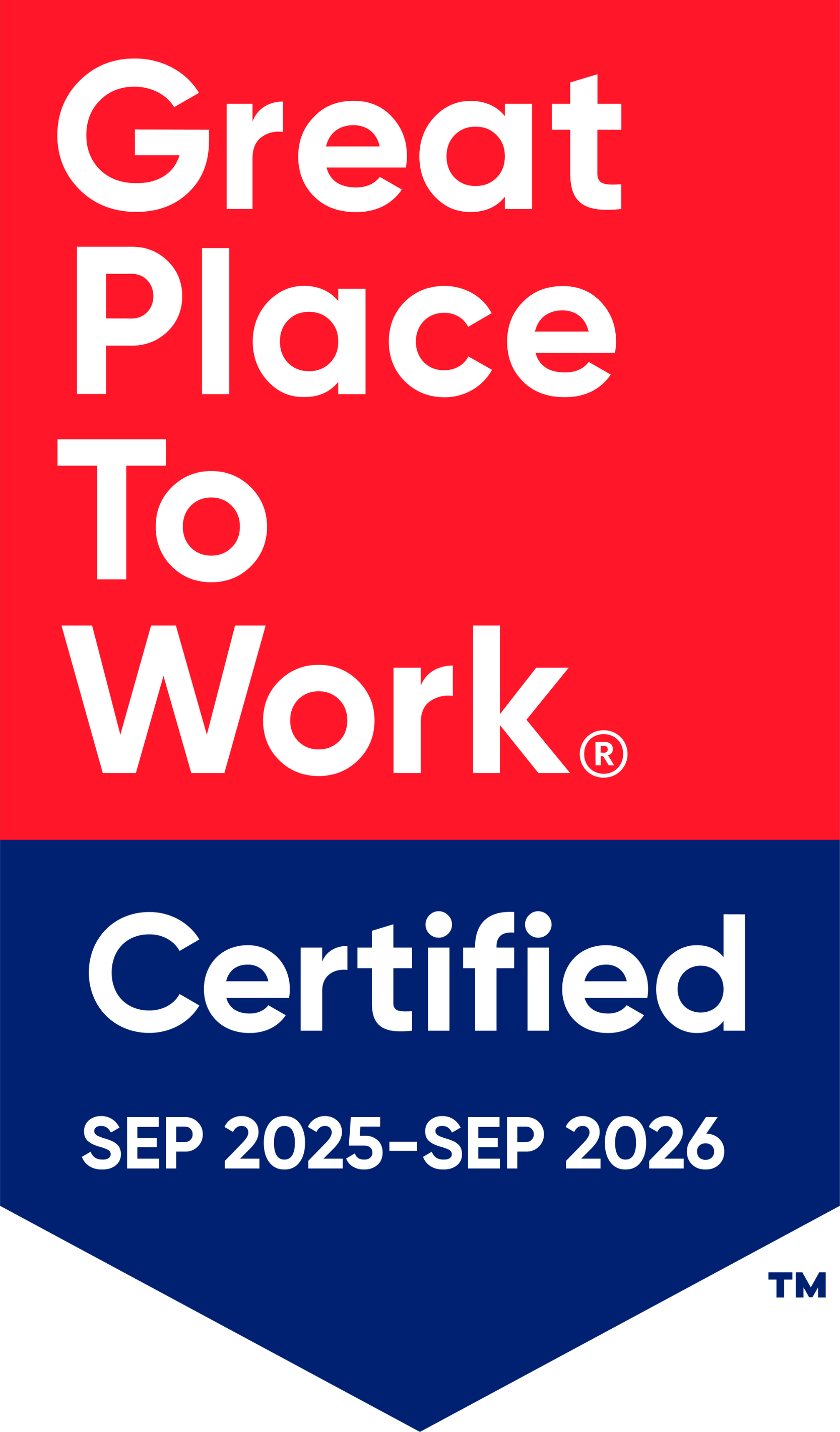Employee Evaluation System: Impact on Company Culture

Employee evaluations do more than just measure performance they shape your company’s culture. When done right, they boost trust, morale, and growth. But when handled poorly, they create tension, confusion, and dissatisfaction.
An effective employee evaluation system is more than a tool it’s a catalyst for creating a workplace where people feel valued, motivated, and inspired to grow. Let’s dive into how evaluation systems influence company culture and why they are essential for business success.
What Is an Employee Evaluation System?
An employee evaluation system is a formalized process used by organizations to assess and measure employee performance, skills, and overall contributions. It provides a structured framework for giving feedback, setting goals, and tracking progress, helping both employees and companies grow.
When properly implemented, an evaluation system becomes more than just a tool for annual reviews it turns into a continuous feedback loop that promotes improvement, enhances engagement, and aligns individual efforts with business objectives.
Key Components of an Employee Evaluation System
An effective evaluation system typically consists of the following components:
1. Performance Reviews: Regular Managerial Assessments
Performance reviews are manager-led assessments conducted at regular intervals (monthly, quarterly, or annually). They evaluate:
- Job performance: How well the employee fulfils their responsibilities.
- Goal achievement: Progress toward individual or team objectives.
- Strengths and areas for improvement: Identifying key skills and areas needing development.
2. Self-Assessments: Employee-Led Reflections
Self-assessments give employees the opportunity to evaluate their own performance. This process encourages self-reflection and accountability, allowing individuals to:
- Identify their strengths and accomplishments.
- Highlight challenges or obstacles they faced.
- Share personal insights into their growth and future goals.
3. Peer Reviews: Feedback from Colleagues
Peer reviews involve feedback from co-workers who collaborate with the employee being evaluated. This offers a well-rounded perspective on interpersonal skills, teamwork, and collaboration.
Benefits of Peer Reviews:
- Provides insights into team dynamics.
- Identifies hidden strengths or challenges.
- Fosters a culture of open communication and accountability.
4. 360-Degree Evaluations: Multi-Source Feedback
A 360-degree evaluation gathers feedback from multiple sources, including:
- Managers: Assess leadership and performance.
- Peers: Evaluate collaboration and teamwork.
- Direct reports: Provide feedback on leadership effectiveness.
- Clients or customers: Share insights on service quality.
Benefits of 360-Degree Reviews:
- Comprehensive feedback: More accurate assessment of performance.
- Balanced perspective: Reduces the risk of biased reviews.
- Promotes self-awareness: Employees understand how they are perceived by different stakeholders.
5. Goal Tracking: Measuring Progress Against Objectives
Goal tracking is the ongoing measurement of employee performance against specific objectives. It helps organizations:
- Define clear performance expectations.
- Monitor progress over time.
- Identify areas needing support or realignment.
Key Metrics for Goal Tracking:
- Key Performance Indicators (KPIs): Sales targets, customer satisfaction scores, etc.
- Project milestones: Completion of tasks or phases.
- Skill development: Certifications earned, or training completed.
Why Do Employee Evaluation Systems Matter?
A well-structured employee evaluation system does more than just assess performance—it drives business growth, enhances employee engagement, and promotes a culture of continuous improvement. Here’s why it matters:
1. Fosters Growth Through Meaningful Feedback
Regular, constructive feedback helps employees identify strengths and areas for development, fostering personal and professional growth.
- Clarity on performance: Employees understand what they’re doing well and where they need improvement.
- Opportunities for skill enhancement: Feedback highlights areas for upskilling or training.
- Career progression: Regular evaluations help employees chart a course for advancement.
2. Increases Employee Engagement
Employees who receive frequent feedback feel more recognized, valued, and motivated. This leads to higher engagement levels, boosting morale and reducing turnover.
How Evaluations Boost Engagement:
- Recognition and appreciation: Employees feel valued for their contributions.
- Clear growth paths: Employees are motivated by well-defined career development plans.
- Improved job satisfaction: Transparent feedback fosters a sense of fairness.
According to Gallup, companies with regular employee feedback experience 14.9% lower turnover rates.
3. Improves Transparency and Trust
A transparent employee evaluation system promotes fairness and trust in the workplace by clearly defining performance expectations and providing consistent feedback.
Transparency Benefits:
- Fair treatment: Employees feel they are assessed based on objective criteria.
- Open communication: Employees and managers have honest conversations about performance.
- Accountability: Clear goals keep employees focused and accountable.
4. Boosts Productivity and Performance
When employees understand their goals and receive regular feedback, they become more focused, efficient, and productive.
How Evaluations Boost Productivity:
- Clear performance metrics: Employees know what’s expected of them.
- Frequent course correction: Managers can address performance issues promptly.
- Increased accountability: Employees strive to meet or exceed goals.
Companies with strong performance management practices see 21% higher profitability.
How Employee Evaluation Systems Shape Company Culture
A well-structured employee evaluation system plays a vital role in shaping and strengthening company culture. It goes beyond assessing individual performance it builds trust, boosts morale, and encourages collaboration, creating a positive and productive work environment.
In this detailed analysis, we will explore how evaluation systems influence company culture by:
- Promoting transparency and trust
- Boosting employee morale and motivation
- Strengthening collaboration and team dynamics
A) Building Trust Through Transparency
Transparency is the cornerstone of a healthy workplace culture. When employees clearly understand how their performance is measured, they are more likely to trust the system, their managers, and the organization.
1. Promotes Fairness and Consistency
A transparent employee evaluation system promotes fairness by ensuring all employees are assessed using the same, consistent criteria. This eliminates bias and favouritism, making the process objective and equitable.
- Standardized performance metrics: Employees are evaluated based on clearly defined benchmarks, such as productivity, collaboration, and goal achievement.
- Uniform criteria: Using the same performance standards across departments ensures that no individual or group is unfairly treated.
- Improved perception of fairness: Employees feel that their contributions are recognized and rewarded equally, which enhances trust in the company.
Companies with transparent evaluation systems report 89% higher job satisfaction among employees, according to Quantum Workplace.
2. Encourages Open Communication
Frequent and transparent performance reviews foster open dialogue between employees and managers. This leads to:
- Improved feedback culture: Employees receive regular input on their strengths and areas for improvement.
- Clarified expectations: Clear communication reduces confusion about job roles and responsibilities.
- Stronger relationships: Honest and constructive feedback enhances manager-employee relationships.
3. Strengthens Accountability
When employees know they are evaluated against consistent and transparent standards, they become more accountable for their actions and performance.
- Clear performance expectations: Employees understand what is expected of them, reducing ambiguity.
- Increased ownership: Transparent evaluations encourage employees to take responsibility for their work.
- Predictable consequences: Employees are aware of the rewards for high performance and the repercussions for underperformance.
B) Boosting Employee Morale and Motivation
Employee evaluation systems significantly impact morale by providing meaningful feedback, recognition, and clarity. When employees feel valued and supported, they are more motivated to perform at their best.
1. Recognition Fuels Motivation
Regular feedback and acknowledgment of employee contributions boost morale and foster a sense of accomplishment.
- Public recognition: Employees feel appreciated when their achievements are celebrated in team meetings or newsletters.
- Individual praise: Personalized recognition during evaluations boosts confidence.
- Increased loyalty: Employees who feel valued are more likely to remain loyal to the organization.
Companies with strong performance management practices experience 21% higher profitability, according to Gallup.
2. Clear Goals Drive Engagement
When employees receive specific and measurable performance goals, they feel more engaged and motivated to achieve them.
- Clarity of purpose: Employees know exactly what they need to do to succeed.
- Increased focus: Clear goals minimize ambiguity and align employees with the company’s objectives.
- Motivation through achievement: Tracking progress toward goals boosts confidence and job satisfaction.
3. Improved Job Security and Reduced Anxiety
When employees regularly receive feedback on their performance, they feel more secure in their roles.
- Clarity on performance: Regular evaluations prevent surprises during annual reviews.
- Reduced uncertainty: Employees know where they stand, reducing anxiety about job stability.
- Opportunities for growth: Constructive feedback allows employees to improve and avoid unexpected terminations.
C) Strengthening Collaboration and Team Dynamics
Employee evaluation systems that include peer reviews and collaborative feedback foster better teamwork and strengthen company culture. They promote cooperation, accountability, and conflict resolution.
1. Encourages Teamwork
Incorporating peer feedback into the evaluation process enhances teamwork and cooperation.
- Promotes mutual respect: Employees become more aware of each other’s contributions.
- Improved collaboration: Team members support each other to achieve shared goals.
- Cross-functional synergy: Peer reviews encourage employees to collaborate across departments.
According to Gartner, 56% of employees say that peer feedback improves teamwork.
2. Reduces Conflict Through Transparency
Transparent evaluation systems minimize misunderstandings and reduce workplace conflicts.
- Clear expectations: Employees are aware of their responsibilities, reducing misaligned goals.
- Objective performance data: Transparent systems rely on factual data, reducing personal biases.
- Improved conflict resolution: Clear metrics prevent subjective disagreements.
3. Enhances Accountability Among Team Members
Peer reviews promote accountability, as employees know they will be evaluated by their colleagues.
- Mutual responsibility: Employees become more reliable and consistent.
- Peer influence: Knowing that peers provide feedback encourages better behaviour.
- Shared ownership: Employees take collective responsibility for project success.
The Positive Ripple Effect on Company Values
An effective employee evaluation system goes beyond measuring individual performance—it actively reinforces company values and fosters a culture of growth. When aligned with the organization’s core principles, evaluation systems create a positive ripple effect that strengthens cultural alignment, promotes continuous learning, and drives long-term success.
In this detailed section, we’ll explore:
- How evaluation systems reinforce core values
- How they cultivate a growth mindset
A) Reinforcing Core Values
Company values define the principles and behaviours that shape the organization’s identity. When employee evaluation systems are built around these values, they promote alignment, accountability, and consistency throughout the workforce.
1. Values-Driven Performance Reviews
Performance evaluations that reflect company values reinforce desired behaviors by making them a measurable part of the review process.
- Integrated core values: Key values, such as teamwork, innovation, or customer-centricity, are explicitly included in evaluation criteria.
- Behaviour-based assessment: Employees are evaluated not only on results but also on how they demonstrate the organization’s values.
- Consistency and alignment: Values-based evaluations ensure that all employees are held to the same standards, fostering cultural consistency.
According to SHRM, 84% of employees say that performance management systems reflecting company values increase alignment and commitment to organizational goals.
2. Values-Specific Feedback and Recognition
When performance evaluations highlight how employees exemplify company values, they feel recognized and appreciated for their contributions.
- Behavioural feedback: Managers provide specific examples of how employees embody the organization’s principles.
- Value-based rewards: Employees demonstrating core values receive recognition, such as awards or bonuses.
- Promoting consistency: Frequent, values-focused feedback reinforces desired behaviours across teams.
3. Aligning Individual and Organizational Goals
Effective evaluation systems align individual objectives with company goals, ensuring that employees’ efforts directly contribute to the organization’s mission.
- Goal setting with purpose: Employees’ objectives reflect company values, such as sustainability, customer focus, or innovation.
- Values-driven KPIs: Performance metrics are linked to the company’s strategic priorities.
- Stronger alignment: Employees understand how their work impacts the organization’s overall success.
B) Cultivating a Growth Mindset
An employee evaluation system that emphasizes continuous development promotes a learning-focused culture. It encourages employees to embrace challenges, learn from feedback, and strive for improvement.
1. Continuous Feedback Encourages Skill-Building
Frequent performance evaluations with ongoing feedback promote continuous learning and improvement.
- Real-time feedback: Instead of waiting for annual reviews, regular evaluations help employees course-correct and develop skills in real time.
- Targeted development: Employees receive specific feedback on areas for improvement, guiding their growth.
- Improved adaptability: Continuous feedback fosters a mindset of agility and adaptability.
According to Gallup, companies with frequent feedback experience 14.9% lower turnover rates due to improved employee engagement.
2. Clear Growth Paths and Development Opportunities
When employee evaluations highlight growth opportunities, employees feel motivated to improve their skills and advance in their careers.
- Skill development plans: Evaluations include personalized development plans with specific learning goals.
- Promotion opportunities: Employees with strong evaluations are identified for leadership or specialized training programs.
- Increased motivation: Clear growth paths encourage employees to strive for excellence.
A LinkedIn study reveals that 76% of employees are more engaged at companies offering clear career growth opportunities.
3. Development Plans for Continuous Improvement
Effective employee evaluation systems go beyond performance scores by outlining personalized development plans that target improvement areas.
- Skill-building objectives: Development plans include specific training or certifications.
- Behavioural goals: Employees receive guidance on refining soft skills, such as communication or leadership.
- Progress tracking: Managers regularly review and adjust development plans based on employee growth.
When Evaluations Hurt Company Culture
While employee evaluations are designed to promote growth and improvement, poorly executed systems can have the opposite effect, damaging morale, trust, and overall company culture. When evaluation processes are inconsistent, biased, or lack follow-through, they create frustration, confusion, and disengagement.
In this section, we’ll explore:
- The impact of inconsistent or biased reviews
- How lack of follow-through weakens employee trust and morale
A) Inconsistent or Biased Reviews: Damaging Trust and Fairness
An evaluation system is only effective if it is fair, consistent, and objective. When reviews are influenced by favouritism, inconsistency, or personal bias, employees perceive them as unfair, which damages trust and reduces motivation.
1. Favouritism Reduces Morale
When managers display favouritism by giving certain employees better reviews regardless of performance, it creates resentment and disengagement.
- Unfair treatment breeds frustration: When employees believe their colleagues are unfairly favoured, it creates bitterness and reduces motivation.
- Decreased morale: Those who feel undervalued or unfairly treated lose confidence in the organization.
- Increased turnover risk: Employees who experience favouritism are more likely to seek jobs elsewhere.
A study by the American Psychological Association (APA) found that 45% of employees consider leaving their job due to perceived unfair treatment during evaluations.
2. Inconsistent Feedback Creates Confusion
When evaluation criteria or feedback varies between managers or departments, employees receive mixed messages, leading to confusion and frustration.
- Lack of clarity: Employees feel uncertain about performance expectations.
- Difficulty in improvement: Without consistent feedback, employees struggle to identify and address weaknesses.
- Perceived unfairness: Inconsistent reviews create perceptions of bias or favouritism.
3. Bias Reduces Fairness and Trust
When evaluations are influenced by unconscious bias based on gender, age, race, or personality employees lose trust in the system.
- Subjective assessments: Bias leads to inconsistent or inaccurate reviews, undervaluing certain employees.
- Reduced fairness: Employees perceive the process as unfair, leading to frustration and disengagement.
- Erosion of trust: Biased evaluations weaken confidence in leadership and HR practices.
B) Lack of Follow-Through: Undermining Employee Trust
An evaluation system without actionable follow-up feels meaningless. When feedback isn’t used to create development plans, address concerns, or recognize contributions, employees feel ignored and undervalued.
1.No Development Plans: Employees Feel Stagnant
When evaluations don’t lead to tangible development plans, employees feel like they’re treading water.
- Lack of growth: Employees feel stuck without clear pathways for improvement.
- Decreased motivation: Without support for skill-building, employees lose interest in advancing.
- Higher turnover risk: Workers may leave if they feel their professional growth is stunted.
According to Gallup, 58% of employees say that the lack of feedback follow-up significantly reduces their engagement.
2. Unaddressed Concerns Lower Morale
If employees share concerns or feedback during evaluations but see no action taken, it creates disillusionment and disengagement.
- Employees feel ignored: When concerns are repeatedly unaddressed, employees stop offering feedback.
- Reduced trust in leadership: Employees view management as disinterested or ineffective.
- Decreased morale: Feeling unheard lowers job satisfaction and engagement.
3. Missed Recognition Demotivates Employees
When positive feedback isn’t followed by recognition or rewards, employees feel undervalued.
- Reduced motivation: Employees become demotivated when their efforts go unnoticed.
- Lower engagement: Lack of recognition reduces employee commitment.
- Decreased productivity: Employees put in less effort when their achievements aren’t acknowledged.
Best Practices for Using Evaluations to Improve Culture
When implemented effectively, employee evaluations can do more than just measure performance they can shape and strengthen company culture. By making feedback frequent, data-driven, and collaborative, organizations can boost employee engagement, promote fairness, and foster growth.
In this section, we’ll explore:
- Frequent and constructive feedback
- Data-driven evaluations to reduce bias
- Fostering two-way communication
A) Make Feedback Frequent and Constructive
Relying solely on annual performance reviews is outdated and ineffective. To improve company culture, feedback should be frequent, timely, and constructive. Regular evaluations keep employees engaged, motivated, and on track with their goals.
1. Monthly or Quarterly Reviews: More Relevant and Actionable
Frequent evaluations provide employees with timely insights into their performance, making feedback more relevant and actionable.
- Continuous improvement: Regular reviews allow employees to adjust quickly, rather than waiting for an annual review.
- Real-time feedback: Timely feedback helps employees stay aligned with company goals.
- Increased engagement: Employees feel supported when their performance is monitored consistently.
Companies with regular feedback cycles experience 27% higher employee performance, according to a study by Gallup.
2. Clear, Measurable Goals: Ensuring Clarity and Focus
For feedback to be effective, employees must have clear, measurable goals.
- Define SMART goals: Use Specific, Measurable, Achievable, Relevant, and Time-bound objectives.
- Align goals with company values: Ensure that individual goals contribute to the organization’s mission.
- Track progress regularly: Frequent evaluations measure goal achievement and identify areas for improvement.
3. Balanced Feedback: Highlighting Strengths and Growth Areas
To boost morale and productivity, feedback should highlight both strengths and areas for improvement.
- Positive reinforcement: Recognizing strengths motivates employees and encourages consistency.
- Growth opportunities: Identifying areas for development helps employees understand where to focus.
- Constructive tone: Frame feedback in a way that promotes learning rather than criticism.
B) Use Data to Minimize Bias: Ensuring Fair and Objective Reviews
Subjectivity and favouritism can undermine the credibility of evaluation systems. Using data-driven evaluations ensures fairness, accuracy, and consistency.
1. Standardized Criteria: Promoting Equal Treatment
By using standardized evaluation criteria, companies ensure that all employees are assessed fairly and consistently.
- Clear performance metrics: Establish measurable KPIs (Key Performance Indicators) that apply to all employees in similar roles.
- Uniform rating scales: Use consistent scoring systems to minimize interpretation bias.
- Structured rubrics: Provide clear guidelines for each performance category.
According to SHRM, 70% of HR leaders say that data-driven evaluations significantly improve fairness and accuracy.
2. Anonymous Peer Reviews: Encouraging Honest Feedback
Incorporating anonymous peer feedback adds a layer of objectivity and reduces favouritism.
- Honest assessments: Anonymity encourages candid, unbiased feedback.
- Broader insights: Employees receive well-rounded feedback from multiple sources.
- Increased fairness: Peer reviews reduce manager bias by including diverse perspectives.
3. Objective Metrics: Reducing Subjective Judgments
Using quantifiable metrics helps reduce personal biases in evaluations.
- Performance benchmarks: Define measurable outcomes (e.g., sales targets, project deadlines) to assess employees objectively.
- Data-driven decisions: Use employee performance data to support promotion and compensation decisions.
- Minimized favouritism: Relying on metrics reduces the influence of personal preferences.
C) Foster Two-Way Feedback: Creating a Collaborative Process
Traditional evaluations are often one-sided, with managers delivering feedback to employees. However, making evaluations a two-way conversation promotes engagement, trust, and mutual understanding.
1. Encourage Employee Input: Valuing Self-Assessments
Allowing employees to participate in their own evaluations creates a sense of ownership and fairness.
- Self-assessments: Employees reflect on their own performance, providing insights into their achievements and challenges.
- Identify blind spots: Self-assessments highlight areas managers may overlook.
- Boosts engagement: Involving employees increases their commitment to improvement.
68% of employees say that two-way feedback processes significantly improve job satisfaction.
2. Collaborative Goal Setting: Driving Engagement
Evaluations should include goal-setting discussions, allowing employees and managers to collaborate on future objectives.
- Mutual alignment: Managers and employees set clear, achievable goals together.
- Improved accountability: Employees feel more committed to goals they help create.
- Continuous growth: Collaborative goals encourage consistent improvement.
3. Open Dialogue: Addressing Concerns Together
Encouraging open dialogue during evaluations helps build trust and resolve issues collaboratively.
- Active listening: Managers actively listen to employee concerns.
- Mutual problem-solving: Jointly address performance challenges.
- Strengthened trust: Employees feel heard and valued.
3. Objective Metrics: Reducing Subjective Judgments
Using quantifiable metrics helps reduce personal biases in evaluations.
- Performance benchmarks: Define measurable outcomes (e.g., sales targets, project deadlines) to assess employees objectively.
- Data-driven decisions: Use employee performance data to support promotion and compensation decisions.
- Minimized favouritism: Relying on metrics reduces the influence of personal preferences.
The Role of Technology in Modern Evaluations
Technology is revolutionizing employee evaluations, making them faster, fairer, and more insightful. Modern performance management systems use automation, data analytics, and AI to streamline processes and provide actionable insights.
In this section, we’ll explore:
- Automated performance tracking
- Data-driven insights for smarter decisions
A) Automated Performance Tracking: Real-Time and Accurate Evaluations
Traditional performance evaluations often rely on manual processes, which are time-consuming, error-prone, and subjective. However, automated performance tracking streamlines the process by:
- Collecting real-time data
- Providing continuous feedback
- Using AI-based analysis to reduce bias
According to a study by Gartner, 57% of HR teams now use automated evaluation tools to improve accuracy and efficiency.
1. Real-Time Data: Instant Insights for Better Decisions
Automated systems continuously track and measure employee performance, providing real-time data instead of relying on periodic reviews.
- Instant performance metrics: Managers have immediate access to productivity rates, project progress, and individual contributions.
- Accurate evaluation: Real-time data minimizes reliance on memory, ensuring more precise assessments.
- Faster interventions: Continuous tracking allows managers to identify and address issues promptly.
2. Continuous Feedback: Improving Accuracy and Development
Automated evaluation tools enable ongoing feedback rather than waiting for annual or quarterly reviews.
- Frequent touchpoints: Employees receive regular performance updates, promoting continuous growth.
- Increased engagement: Real-time feedback helps employees improve immediately, rather than waiting months for guidance.
- Improved accuracy: Frequent evaluations reduce recency bias, ensuring a more comprehensive review.
3. AI-Based Analysis: Reducing Human Error and Bias
AI-powered evaluation tools minimize human error and unconscious bias by relying on data-driven insights rather than subjective opinions.
- Objective assessments: AI evaluates performance based on metrics (e.g., project completion rates) rather than personal opinions.
- Reduced favouritism: Automated systems ensure consistent and unbiased evaluations.
- Improved accuracy: AI detects patterns and anomalies in performance data, providing more reliable insights.
B) Data-Driven Insights for Smarter Decisions: Enhanced Evaluation Accuracy
Technology-driven evaluation systems don’t just track performance—they also generate actionable insights. These insights help companies:
- Identify trends
- Track employee growth over time
- Pinpoint skill gaps and tailor training programs
A report by Deloitte reveals that 60% of companies using analytics-driven evaluations experience better talent retention and workforce optimization.
1. Identify Trends: Spot Patterns in Performance
Modern employee evaluation systems analyse performance data over time to identify trends and patterns.
- Employee consistency: Detect whether employees are consistently high or low performers.
- Emerging skills or weaknesses: Identify employees who are improving or declining.
- Predictive analytics: Use past performance data to forecast future success.
2. Track Growth: Measure Improvement Over Time
Data-driven evaluation systems allow companies to track individual and team performance trends over time.
- Longitudinal data: Monitor progress or decline across months or years.
- Goal achievement: Measure how well employees meet their performance targets.
- Retention impact: Track whether performance improvements lead to longer employee tenure.
3. Pinpoint Skill Gaps: Tailor Training Programs
Data-driven evaluations identify specific skill gaps, helping companies customize employee training programs.
- Targeted learning: Training focuses on areas where employees struggle.
- Individualized development: Employees receive personalized skill enhancement plans.
- Stronger workforce: Skill-based training improves overall team competency.
Conclusion
A well-implemented employee evaluation system does more than measure performance—it defines your company’s values. It builds trust, boosts morale, and strengthens collaboration. Transparent and fair evaluations create a workplace where employees feel valued and motivated.
Investing in a modern, data-driven evaluation system doesn’t just benefit individuals—it drives overall business growth.
Frequently Asked Questions
How does an evaluation system impact employee retention?
Regular, fair evaluations significantly enhance job satisfaction. Companies that implement structured feedback processes experience 14.9% lower turnover. This leads to better employee retention and a more motivated workforce.
What is the ideal frequency for employee evaluations?
Frequent reviews, such as monthly or quarterly, are more effective than annual evaluations. Companies with regular feedback cycles see 27% higher performance. This approach keeps employees engaged and aligned with company goals.
Can evaluation systems improve productivity?
Clear goals and regular feedback drive better employee performance. Companies with this approach experience 21% higher profitability. This highlights the financial benefits of structured evaluations.
What role does technology play in modern evaluation systems?
Tech-based evaluations provide real-time feedback and data-driven insights. Companies using these systems see 57% improved accuracy in performance assessments. This enhances fairness and decision-making.
How can evaluation systems reduce workplace bias?
By using standardized criteria and data analytics, companies ensure consistent and fair assessments. This reduces bias and favouritism in performance reviews. As a result, employees perceive the evaluation process as more transparent and trustworthily









_svxLrd-8yH.png)

_2VYSFUTN5m.png)

_JiluXJRGNl.svg)

_2djTKNocf.png)





_Rapo0hRMBy.png)

















